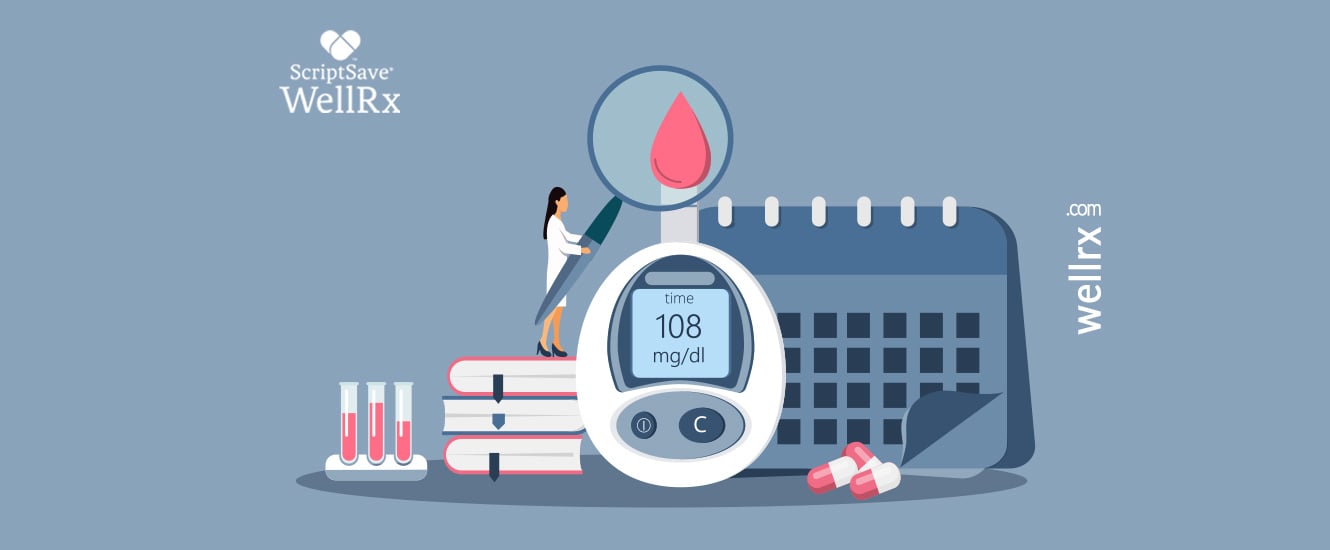November is American Diabetes Month — an excellent time to take a look at your current lifestyle and identify some changes you can make to reduce your risk for type 2 diabetes.
Type 2 diabetes is a chronic disease that affects roughly 30 million Americans. The long-term side effects and complications of diabetes can be severe. They include eye problems, kidney disease, skin problems, slow wound healing, frequent infections, high blood pressure, nerve damage, and more.
Fortunately, type 2 diabetes can be managed and often even prevented with changes to diet and lifestyle. If you're at risk of diabetes, or you're already experiencing prediabetes or insulin resistance, making healthy lifestyle changes now can greatly reduce your risk and help protect your health as you age.
What Is Type 2 Diabetes?
Type 2 diabetes affects the way the body uses insulin, which is a hormone that helps transport sugar, or glucose, into cells to be used for energy. In people with type 2 diabetes, the body either doesn't produce enough insulin or doesn’t respond to insulin the way it should. As a result, glucose builds up in the blood, which can lead to numerous health consequences.
The symptoms of type 2 diabetes can develop slowly over time, and many people are unaware that they have it until it becomes severe enough to have an obvious effect on their health. Symptoms of diabetes can include:
- Blurred vision
- Fatigue
- Frequent urination
- Headaches
- Increased hunger or thirst
- Sores that don’t heal
- Swollen and tender gums
- Tingling hands and feet
Type 2 diabetes used to be more common in people over the age of 45 but is now being seen in more children and teens.
How to Prevent Type 2 Diabetes
Because it is a disease related to blood sugar, type 2 diabetes can often be managed with dietary and lifestyle changes that help reduce blood sugar levels. The following are 4 ways you can lower your risk for developing type 2 diabetes.
1. Reduce Your Intake of Sugar and Refined Carbohydrates
Numerous studies have demonstrated a link between diets high in sugar and an increased risk for diabetes. Sugar and refined carbs, such as white bread and pasta, cause blood sugar levels to spike. As a result, the pancreas has to produce more insulin. Over time, the body's response to insulin becomes impaired, leading to chronically high blood sugar.
One of the best ways to put an end to this cycle is to cut back on refined carbohydrates and foods that are high in sugar. Depending on the current state of your diet, this could be a significant change that may take considerable time and effort. Don’t be discouraged if you continue to have cravings for sugary foods. This is normal and should subside over time as you continue to make healthier choices.
2. Eat More Low-Glycemic Foods
As you work to reduce sugars and refined carbs in your diet, you will need to replace them with foods that have less of an impact on blood sugar. Low-glycemic foods are digested and absorbed more slowly, resulting in a slower and smaller increase in blood sugar levels.
Foods that contain carbs are rated on the glycemic index (GI) according to how they affect glucose levels. Foods with a higher rating (70 or more) should be limited. Foods with a low GI value (55 or below) are generally considered better for blood sugar management. Note that GI value is not necessarily indicative of a food's overall healthiness, but rather its carbohydrate content. Foods that don’t contain carbs, such as meat and eggs, are not included in the glycemic index.
As you work to reduce refined carbs in your diet, the glycemic index can help you find better alternatives. For example, brown rice has a lower GI score than white rice. To reduce your carbohydrate intake even further, you could substitute riced cauliflower for rice.
ScriptSave’s Grocery Guidance app can also help you find healthier alternatives to some of the foods you buy most often. Simply scan the barcode on any food package to reveal its WellRx Health Index and discover "better for you" alternatives. Download the app on the App Store or Google Play to get started.
3. Drink Plenty of Water
Not only is hydration important for your overall health, but making an effort to drink more water will also help you avoid sugary beverages. Drinks such as sodas, sports beverages, and fruit juice are linked to an increased risk of diabetes. One study found that drinking more than two sugar-sweetened beverages per day was associated with a higher risk of both type 2 diabetes and another form of diabetes in adults, known as latent autoimmune diabetes.
In contrast, other studies have shown that drinking water can lead to better blood glucose control.
4. Exercise Regularly
When you exercise, the body uses glucose for energy. This lowers the glucose levels in your blood and helps improve the body’s response to insulin.
Exercise doesn’t have to be intense to be beneficial. One study found that moderate-intensity exercise improved insulin sensitivity by 51%, while high-intensity exercise resulted in an 85% improvement. Studies have shown that many types of exercise are effective at reducing blood sugar levels and improving insulin resistance, including strength training, interval training, and aerobic exercise. Therefore, it's best to choose a form of exercise that you enjoy and that you will be able to stick with long term.
You have control over many factors that affect your risk of diabetes. Regardless of your age or the severity of any risk factors, it's never too late to make healthy changes that can improve your blood sugar levels. And, the same healthy habits can also help reduce your risk of other common health conditions, such as heart disease and cancer.
Karen Eisenbraun is a Certified Holistic Nutrition Consultant. She holds an English degree from Knox College and has written extensively about topics related to holistic health, clinical nutrition, and weight management.
References:
https://www.cdc.gov/diabetes/basics/type2.html
https://pubmed.ncbi.nlm.nih.gov/24555673/
https://www.health.harvard.edu/diseases-and-conditions/glycemic-index-and-glycemic-load-for-100-foods
https://pubmed.ncbi.nlm.nih.gov/27926472/
https://pubmed.ncbi.nlm.nih.gov/27831459/
https://pubmed.ncbi.nlm.nih.gov/24243632/













 Store & manage your medication list
Store & manage your medication list Medication pricing updates
Medication pricing updates Pill & refill reminders
Pill & refill reminders Medication journal & mood log
Medication journal & mood log